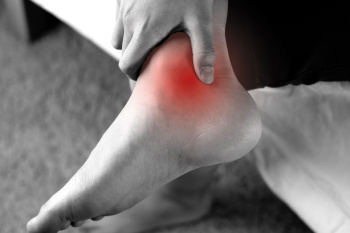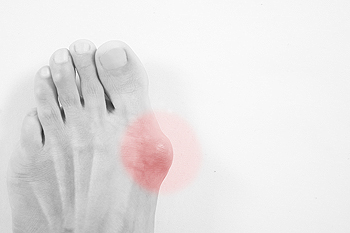Items filtered by date: August 2025
Tarsal Tunnel Syndrome and Its Impact on Foot Health

Tarsal tunnel syndrome is a condition where the posterior tibial nerve becomes compressed as it passes through the tarsal tunnel along the inner ankle. This can cause pain, tingling, numbness, or burning sensations in the foot and ankle. Common causes include flat feet, swelling, injuries, or conditions that place pressure on the nerve. Symptoms often worsen with prolonged walking or standing and risk factors include obesity, diabetes, and repetitive strain on the foot. A podiatrist can diagnose tarsal tunnel syndrome, provide imaging or nerve testing, and recommend treatments such as orthotics or minimally invasive procedures. If you have pain on the inside of your ankle, it is suggested that you consult a podiatrist who can accurately diagnose and treat the problem.
Tarsal tunnel syndrome can be very uncomfortable to live with. If you are experiencing tarsal tunnel syndrome, contact Theresa Brown, DPM of Essie M.B. Smith Foot Clinic. Our doctor can provide the care you need to keep you pain-free and on your feet.
Tarsal Tunnel Syndrome
Tarsal tunnel syndrome, which can also be called tibial nerve dysfunction, is an uncommon condition of misfiring peripheral nerves in the foot. The tibial nerve is the peripheral nerve in the leg responsible for sensation and movement of the foot and calf muscles. In tarsal tunnel syndrome, the tibial nerve is damaged, causing problems with movement and feeling in the foot of the affected leg.
Common Cause of Tarsal Tunnel Syndrome
- Involves pressure or an injury, direct pressure on the tibial nerve for an extended period of time, sometimes caused by other body structures close by or near the knee.
- Diseases that damage nerves, including diabetes, may cause tarsal tunnel syndrome.
- At times, tarsal tunnel syndrome can appear without an obvious cause in some cases.
The Effects of Tarsal Tunnel Syndrome
- Different sensations, an afflicted person may experience pain, tingling, burning or other unusual sensations in the foot of the affected leg.
- The foot muscles, toes and ankle become weaker, and curling your toes or flexing your foot can become difficult.
- If condition worsens, infections and ulcers may develop on the foot that is experiencing the syndrome.
A physical exam of the leg can help identify the presence of tarsal tunnel syndrome. Medical tests, such as a nerve biopsy, are also used to diagnose the condition. Patients may receive physical therapy and prescriptive medication. In extreme cases, some may require surgery.
If you have any questions please feel free to contact our office located in Montgomery, AL . We offer the newest diagnostic and treatment technologies for all your foot and ankle needs.
We Can Treat Your Foot or Ankle Pain
Causes and Finding Relief for Bunions

A bunion is a bony bump that forms at the base of the big toe, caused as it angles toward the second toe. This misalignment may result from inherited foot structure, wearing improper footwear, or conditions such as arthritis. Risk factors include wearing tight or narrow shoes, prolonged standing, and family history. Symptoms include pain, swelling, redness, and difficulty finding comfortable shoes. A podiatrist can assess the severity, recommend footwear changes, provide orthotics, and offer treatment options to relieve pain and prevent progression. If you notice a bump forming near your big toe or feel discomfort while walking, it is suggested that you promptly consult a podiatrist who can accurately diagnose the problem, and offer effective relief and treatment solutions.
If you are suffering from bunions, contact Theresa Brown, DPM of Essie M.B. Smith Foot Clinic. Our doctor can provide the care you need to keep you pain-free and on your feet.
What Is a Bunion?
A bunion is formed of swollen tissue or an enlargement of boney growth, usually located at the base joint of the toe that connects to the foot. The swelling occurs due to the bones in the big toe shifting inward, which impacts the other toes of the foot. This causes the area around the base of the big toe to become inflamed and painful.
Why Do Bunions Form?
Genetics – Susceptibility to bunions are often hereditary
Stress on the feet – Poorly fitted and uncomfortable footwear that places stress on feet, such as heels, can worsen existing bunions
How Are Bunions Diagnosed?
Doctors often perform two tests – blood tests and x-rays – when trying to diagnose bunions, especially in the early stages of development. Blood tests help determine if the foot pain is being caused by something else, such as arthritis, while x-rays provide a clear picture of your bone structure to your doctor.
How Are Bunions Treated?
- Refrain from wearing heels or similar shoes that cause discomfort
- Select wider shoes that can provide more comfort and reduce pain
- Anti-inflammatory and pain management drugs
- Orthotics or foot inserts
- Surgery
If you have any questions, please feel free to contact our office located in Montgomery, AL . We offer the newest diagnostic and treatment technologies for all your foot care needs.




